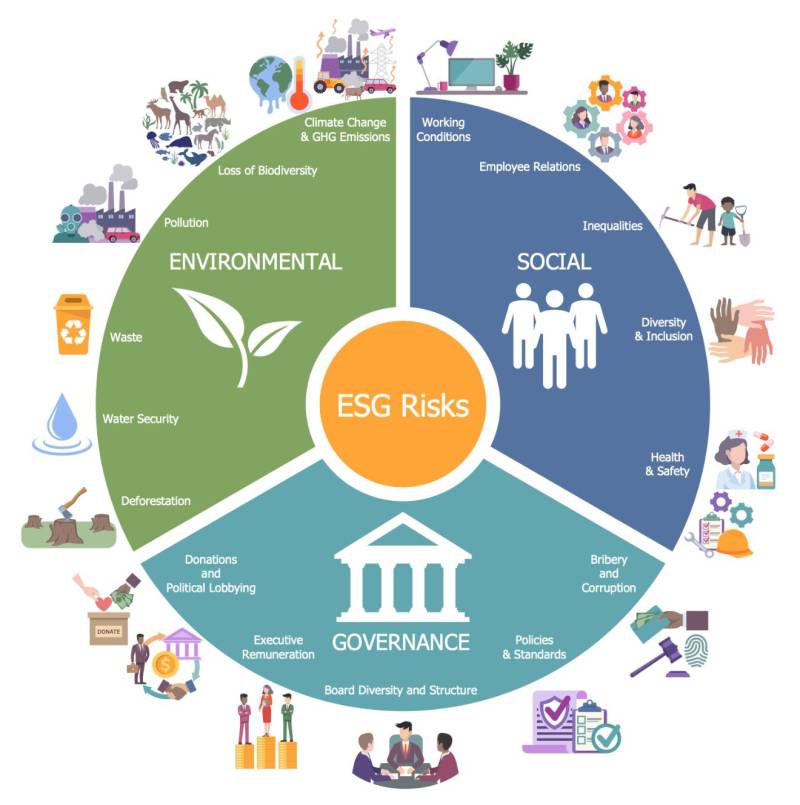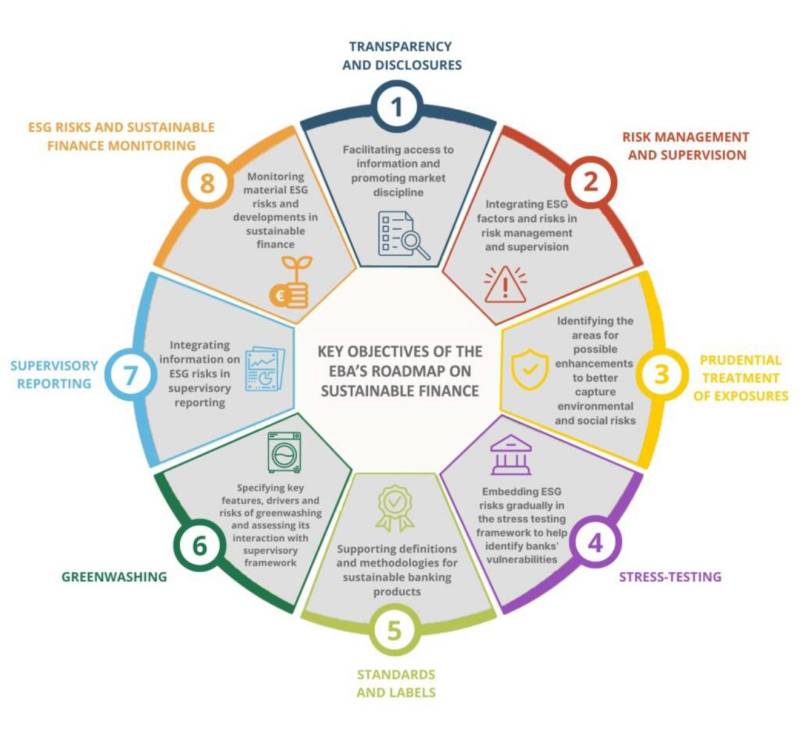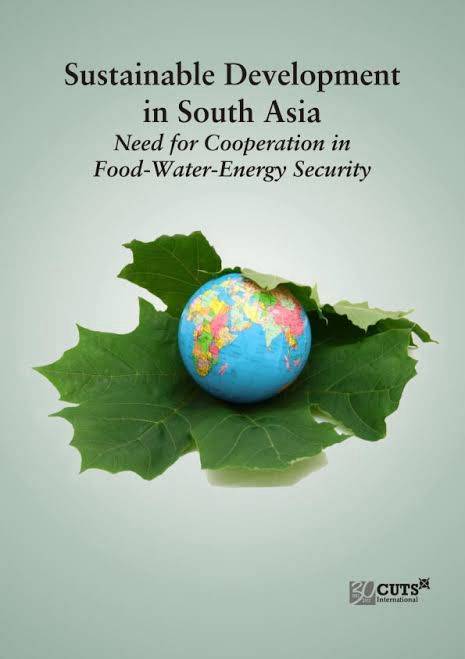How Sustainable Financial Engineering Can Revolutionize the Stature of Asian Development’s Projects in the Subcontinent

Written by: Muhammad Abraham Asif
Infrastructure gaps and an environmental crisis seriously challenge sustainable development in South Asia. The use of innovative financial instruments blended finance and green bonds combined with impact investing serves as a solution to development difficulties through sustainable financial engineering. This assessment faces debate among theories of development finance due to their conflicting views with dependency theory and neoliberalism about sustainable development outcomes. South Asian nations can develop socially inclusive economically feasible and environmentally friendly projects through financial instrument combinations of blended finance and green bonds and impact investing. This paper explores how sustainable financial engineering can drive growth in the Subcontinent by highlighting its practical applications, benefits, and limitations and analyzing the opposition from political settings and institutional structures.
Sustainable financial engineering is a notion that merges conventional financing with new instruments intended to finance long-term development objectives. One of the most important elements of sustainable financial engineering is blended finance, which marries public money with private sector investment to de-risk projects and mobilize capital for development initiatives. Sustainable financial engineering integrates conventional funding systems with new financial tools which aim for enduring developmental results. Blended finance stands as a fundamental element here by using public money to draw private capital investments to reduce project risk levels thus generating financial resources. Considering the major infrastructure gaps across the Subcontinent blended finance acts as a critical tool to obtain funding for extensive projects. The widespread recognition of blended finance potential remains important yet rigorous cost-benefit and risk analysis must evaluate its actual effectiveness.
Blended finance lowers the risk in development projects by reducing the amount of capital that private funds need to invest in high-risk ventures and encouraging them to participate in projects they might otherwise avoid.Studies conducted by the Asian Infrastructure Investment Bank (AIIB) show that uniting public and private financing achieves its purpose to minimize financial risk perception. Public fund investments for project de-risking according to the World Bank (2020) have brought greater private sector participation to South Asian infrastructure projects especially for renewable energy and climate-resilient developments. The financial viability of such models requires thorough evaluation, as they require substantial initial public funding, and long-term project returns often differ from predictions, especially in politically unstable environments.
By using public money to de-risk, blended finance induces private investment in projects that would otherwise be avoided,mobilizing urgently needed capital for major infrastructure, renewable energy, and climate-resilient projectsBlended finance has proven effective in addressing infrastructure and development challenges in developing economies like Brazil and Kenya.The World Bank (2020) explains how Brazil implements blended finance to combine public and private funding for reducing investment risks in large renewable energy projects. Kenyan sustainable agriculture and clean energy projects received investments from private sectors through risk mitigation strategies provided by blended finance (OECD, 2019).
A comparison between these examples and South Asian countries reveals several points of connection and differentiation. Both Brazil and Kenya share characteristics with South Asian economies, such as large populations and significant infrastructure needs. The level of political stability together with institutional capacity differs between individual nations. The implementation of blended finance models by India and Bangladesh faces fewer obstacles since the institutions function well while Pakistan and Sri Lanka face implementation obstacles due to weak governance and political instability according to the Asian Development Bank (2020).
Local conditions need assessment before implementing blended finance methods according to the findings from this research. The effectiveness of blended finance approaches in South Asia depends on creating financial programs that match the distinct political systems and institutional structures of individual nations within the region.
The Asian Infrastructure Investment Bank (AIIB) implements blended finance to support Asian infrastructure development across the region. The success of the AIIB uses blended finance and offers a template for South Asian nations seeking to finance their infrastructure development sustainably. Through the blending of concessional public resources with private sector investments, the AIIB has been able to de-risk high-potential projects and attract capital that would otherwise have been unwilling to invest. This approach has been instrumental in fostering development and ensuring that infrastructure projects are not only financially viable but also aligned with sustainability goals (Moazzem & Kathuria, 2020). Adopting such models across South Asia could greatly improve infrastructure while addressing environmental and social issues.

Green bonds are another essential financial tool for sustainable infrastructure.Green bonds serve as vital financial instruments which support funding projects that promote environmental sustainability together with renewable energy development and climate-resilient infrastructure. The adoption of green bonds faces multiple structural difficulties across South Asia. The shaky financial reputation of debt issuers stands out as a major obstacle to preventing investors from getting involved because many regional countries maintain poor credit scores. Limited investor participation exists because institutional investors tend to go for traditional investments instead of green bonds while remaining unfamiliar with them. The South Asian region faces hurdles in green bond adoption because its regulatory systems lack proper standards for transparency and reporting in addition to insufficient legal frameworks for green bond issuance.
These bonds raise funds for projects that have environmental benefits, like renewable energy, clean water, and sustainable agriculture. With the Subcontinent's serious environmental issues, such as high air pollution and water shortages, the green bond issuance can be a crucial source of funds for projects addressing these problems. India and other countries have already started issuing green bonds,demonstrating the capacity of this financial instrument to support climate-resilient infrastructure.(Hossain & Kathuria, 2020).
Impact investing is also a financial tool that addresses both social and financial returns. By allocating capital to projects that generate measurable social and environmental outcomes, impact investing complements the development agenda of South Asia. Subcontinent nations confront substantial poverty, inequality, and environmental issues, and impact investing offers the means to mobilize private sector investment for projects that have a direct impact on these issues. Impact investing utilizes private funding for projects which achieve quantitative social and environmental impact goals. The effectiveness of measuring and enforcing impact needs strong operational mechanisms to function properly. Independent auditors must verify third-party project impact measurements to ensure funding reaches only initiatives producing genuine outcomes. Global standards like those found in the Impact Management Project's (IMP) framework should be used for developing transparent impact metrics because they help generate reliable measurement results. Impact washing represents an issue because some initiatives falsely report social impact while failing to achieve results and metrics manipulation happens through selective data reporting for fabricating favorable outcomes. The occurrence of such problems underscores a requirement for enhanced regulatory supervision in addition to more transparent accountability systems that help maintain impact investing's effectiveness.This has excellent potential to release private capital for development projects, especially in renewable energy and affordable housing (Ella, 2021). By investing in projects with social and environmental significance, impact investing supports the region's sustainable development agenda.

The incorporation of sustainable financial engineering into development projects, however, is not without challenges. Political and institutional instability stands as a major obstacle. The phenomenon of political risk together with civil unrest creates market uncertainty which prevents new investments from taking place and leads to weakened project stability. Financial instruments face implementation challenges because institutional defects produce regulatory complexities and bureaucratic disunity which result in operational inefficiencies and operational corruption. The resolution of political risk needs stability agreements as the solution but institutional weakness requires regulatory reforms together with capacity building programs.Political instability afflicts governments throughout most South Asian countries thereby creating challenges in performing both long-term development planning and executing completed projects. Political instability deters investment commitments from potential investors, who require substantial project stability. Most Subcontinental countries have fragile institutional structures that intensify their sustainability finance obstacles. Organizations rely on traditional financing methods that prioritize immediate returns over long-term sustainability thus they face challenges implementing financial instruments like blended finance and green bonds (Taylor & Francis, 2020; ScienceDirect, 2013; Oxfam, 2021).Traditional financing techniques enable organizations to maximize immediate financial gains at the detriment of establishing long-term sustainability because of multiple influential elements. Many government institutions along with public organizations face binding mandate limitations because they operate under performance benchmarks prescribed by political decision-makers or donations. The poor institutional capacity which includes limited expertise in using complex financial instruments such as blended finance and green bonds prevents organizations from effectively handling these instruments. Political pressures challenge financial institutions because public sector organizations and other entities must satisfy immediate demands for financial performance over sustainability objectives.
The Subcontinent needs governments to establish robust transparent stable regulatory systems that enable sustainable finance advancement. Governance needs to be strengthened and institutional capacity enhanced in order to attract long-term investments.Nations must foster an environment where public and private sector investments in sustainable projects are secured and incentivized. International bodies like the World Bank and the Asian Development Bank can help by lending technical support, capacity development, and risk-mitigation mechanisms to guarantee effective implementation of sustainable financial models (Emerald, 2019).

Regional differences need to be considered as well while thinking about the implementation of sustainable financial engineering. Although nations such as India and Bangladesh have already started using green bonds and blended finance instruments, others, like Sri Lanka and Afghanistan, are likely to have more problems bringing in investment due to institutional and political instability issues. Thus, sustainable financial engineering needs to be designed with the needs and institutional specifics of every country and regional cooperation has the potential to overcome some obstacles by pooling resources and cross-border best practice (Ella, 2021).Regional cooperation works as a solution through two methods: pooling resources and sharing best practices with examples developing from the SAARC Development Fund and the ASEAN Infrastructure Fund. Both organizations enhance infrastructure development but their operations remain restricted due to country politics split and institutional effectiveness challenges and different national strategic goals. The present obstacles demonstrate why states must develop stronger political relations along with streamlined regulatory standards to boost regional collaboration.
Although the scale of sustainable financial engineering is very promising, its scalability has criticisms. Others contend that blended finance, while effective in certain instances, might not always meet its desired results in more unstable settings.The effectiveness of blended finance varies across different scenarios since it may not achieve its intended goals in environments with unstable political conditions. Blended finance approaches fail in challenging environments because these environments usually lack effective regulatory frameworks and political stability and institutional capabilities. Stable governance proves crucial because donor-imposed conditions in unstable countries cause blended finance to experience challenges when they cannot adapt to local needs. Results-based financing systems increase these challenges because they emphasize measurable outcomes instead of sustainable methodological shifts while working in fragmented institutions that operate in unstable territories. The use of private sector capital can at times result in the prioritization of projects with the greatest potential for financial return, potentially over the projects with essential but less financially rewarding social or environmental benefits. Furthermore, the financial models themselves can be intricate, and governments might not have the capability to handle them in an efficient manner, particularly in low-capacity or war-affected countries.
Sustainable financial engineering provides an exciting answer to the development conundrum of the Subcontinent. Utilizing blended finance, green bonds, and impact investing, South Asian nations can correct infrastructure deficiencies, spur economic development, and move towards environmental sustainability. These mechanisms, however, require political stability, strong institutional frameworks, and capacity building to be effective. South Asia, through robust regulatory frameworks, regional cooperation, and support from international organizations, will unlock the true potential of sustainable financial engineering. The Subcontinent is at the crossroads; innovative financial models will pave the way for a more prosperous and sustainable futureThe full advantages of sustainable financial engineering will become available to South Asia through strong regulatory structures and regional collaboration together with international organizational backing. The indicated path does not have a guaranteed result. The combination of elite control over regulatory reforms and geopolitical tensions would create major obstacles to policy changes because powerful local elite members stand in opposition to reforms damaging their interests while dominant interregional relationships create difficulties in developing international cooperation. According to political economy studies institutional convergence happens without a definite linear pattern and the region encounters serious hurdles when trying to convert financial innovations into lasting sustainable results. Innovative financial models present encouraging potential but require the successful resolution of these institutional impediments to achieve their ambitions..
References
Hossain, M. & Kathuria, R., 2020. South Asian Economic Development. Taylor & Francis. Available at: https://www.taylorfrancis.com/books/mono/10.4324/9780203863343/south-asian-economic-development-moazzem-hossain-rajat-kathuria [Accessed 19 April 2025].
Ella, D., 2021. 'Balancing effectiveness with geo-economic interests in multilateral development banks: the design of the AIIB, ADB, and the World Bank in a comparative perspective'. Pacific Review, 34(6), pp. 1022-1053. Available at: https://doi.org/10.1080/09512748.2020.1788628 [Accessed 19 April 2025].
ScienceDirect, 2013. 'Sustainable Development and Financial Engineering'. Environmental Science and Technology. Available at: https://www.sciencedirect.com/science/article/pii/S0959652613005611 [Accessed 19 April 2025].
Oxfam Library, 2021. 'Climate and Development: Scaling Up Finance'. Available at: https://oxfamilibrary.openrepository.com/handle/10546/620186 [Accessed 19 April 2025].
Emerald Group, 2019. 'Financial Inclusion in Emerging Economies: Achieving Sustainable Development'. International Journal of Public Sector Finance, 28(4), pp. 12-30. Available at: https://www.emerald.com/insight/content/doi/10.1108/itpd-12-2019-0011/full/html [Accessed 19 April 2025].
World Bank, 2020. Blended Finance for Infrastructure Projects in South Asia. Available at: https://www.worldbank.org/en/topic/infrastructure [Accessed 19 April 2025].
World Bank, 2020. Brazil: A Renewable Energy Model for Blended Finance. Available at: https://www.worldbank.org/en/topic/energy [Accessed 19 April 2025].
OECD, 2019. Blended Finance in Africa and Latin America: Case Studies of Successful Projects. Available at: https://www.oecd.org/dac/financing-sustainable-development/ [Accessed 19 April 2025].
Asian Development Bank, 2020. Development Finance in South Asia: A Comparative Analysis. Available at: https://www.adb.org/publications/development-finance-south-asia [Accessed 19 April 2025].
JSTOR, 2021. 'Blended Finance in Asian Development: Insights and Case Studies'. Asian Development Review. Available at: https://www.jstor.org/stable/3665764 [Accessed 19 April 2025].
JSTOR, 2021. 'Blended Finance and Economic Growth in the Subcontinent'. Journal of Development Studies. Available at: https://www.jstor.org/stable/resrep02635?searchText=Blended%20Finance%20in%20Asian%20Development [Accessed 19 April 2025].
JSTOR, 2021. 'Blended Finance in Asian Development: A Policy Perspective'. International Journal of Development Studies. Available at: https://www.jstor.org/stable/resrep55289 [Accessed 19 April 2025].
JSTOR, 2021. 'Financial Engineering and Development Projects in South Asia'. Asian Development Bank Journal. Available at: https://www.jstor.org/stable/10.3098/ah.2019.093.1.004 [Accessed 19 April 2025].
Sustainable Financial Engineering for South Asia, 2020. Taylor & Francis. Available at: https://www.tandfonline.com/doi/abs/10.1080/20430795.2020.1724864 [Accessed 19 April 2025].
Sustainable Financial Engineering in South Asia, 2020. Taylor & Francis. Available at: https://www.tandfonline.com/doi/abs/10.1080/20430795.2020.1735219 [Accessed 19 April 2025].
India Urban Infrastructure Report, 2020. India's Urban Development: Infrastructure Gaps and Investment Opportunities. Available at: https://pdfs.semanticscholar.org/73ac/0c3637d43b3bf30998c26a288828c08874dd.pdf [Accessed 19 April 2025].
